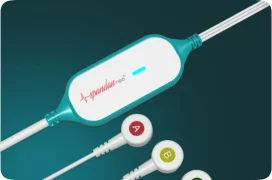
Related Article
Author:- Mr. Ritesh Sharma
An electrocardiogram (ECG or EKG) is a fundamental diagnostic tool used to assess the heart’s electrical activity. It provides valuable insights into cardiac health by recording the heart’s rhythm and electrical impulses. This blog explores abnormal ECG values chart, offering insights into common abnormalities and their implications.
What is an ECG?
An ECG graphically represents the heart’s electrical activity through various waves and intervals. These components include the P wave, QRS complex, and T wave, each reflecting different stages of cardiac activity.
Understanding Normal vs. Abnormal ECG Values
A normal ECG displays a predictable pattern, indicating efficient heart function. However, abnormalities can manifest due to various cardiac conditions or external factors. Identifying abnormal ECG values requires recognizing deviations from the standard pattern.
Common Abnormal ECG Values
- Atrial Fibrillation (AFib):
- AFib is characterized by irregular and rapid atrial contractions, leading to an erratic heart rhythm.
- Abnormal ECG findings in AFib include absent P waves and irregular R-R intervals.
- Bradycardia:
- Bradycardia refers to a slow heart rate (less than 60 beats per minute in adults).
- ECG findings may show prolonged PR intervals, indicating delayed conduction through the atrioventricular node.
- Ventricular Tachycardia (VTach):
- VTach involves rapid, abnormal electrical signals originating from the ventricles.
- ECG shows wide QRS complexes and a heart rate exceeding 100 beats per minute.
- Myocardial Infarction (Heart Attack):
- A heart attack results from blocked blood flow to the heart muscle, causing tissue damage.
- ECG changes include ST-segment elevation or depression and T wave inversion, depending on the affected area.
- Bundle Branch Block (BBB):
- BBB occurs when there is a delay or blockage in electrical impulses along the heart’s bundle branches.
- ECG shows widened QRS complexes (>0.12 seconds) and altered ventricular activation patterns.
- Long QT Syndrome:
- Long QT syndrome involves a delayed repolarization phase of the heart, predisposing to arrhythmias.
- ECG findings include prolonged QT intervals, increasing the risk of sudden cardiac death.
- Wolff-Parkinson-White Syndrome (WPW):
- WPW is characterized by an extra electrical pathway between the atria and ventricles, causing rapid heart rates.
- ECG displays shortened PR intervals and a delta wave (slurred upstroke of the QRS complex).
Clinical Implications of Abnormal ECG Values Chart
Understanding abnormal ECG values chart is crucial for diagnosing and managing cardiac conditions. Clinicians interpret ECG findings in the context of patient symptoms, medical history, and additional diagnostic tests. Prompt recognition of abnormalities guides appropriate treatment strategies, ranging from medications to invasive procedures like catheter ablation or pacemaker implantation.
Importance of Timely Diagnosis and Treatment
Early detection of abnormal ECG values significantly impacts patient outcomes. Timely intervention reduces the risk of complications associated with cardiac abnormalities, improving quality of life and reducing mortality rates. Regular ECG monitoring is essential for individuals with known risk factors or symptoms suggestive of heart disease.
In conclusion, abnormal ECG values chart serves as critical indicators of underlying cardiac pathology. From arrhythmias like AFib and VTach to structural abnormalities such as myocardial infarction, ECG findings offer invaluable diagnostic insights. Clinicians rely on these findings to formulate personalized treatment plans and optimize patient care. By understanding the significance of abnormal ECG values chart, healthcare providers can effectively manage cardiovascular conditions, promoting better heart health outcomes.
For more information on abnormal ECG values chart and their clinical implications, consult with your healthcare provider or cardiologist. Stay informed and proactive in managing your heart health for a healthier future.
Remember, early detection saves lives. Embrace the power of knowledge and proactive healthcare management today!




